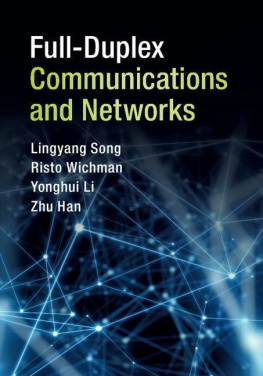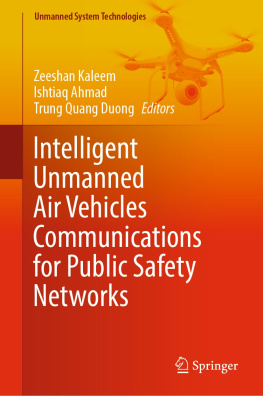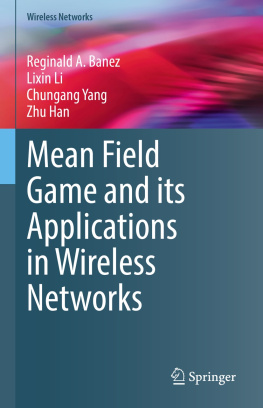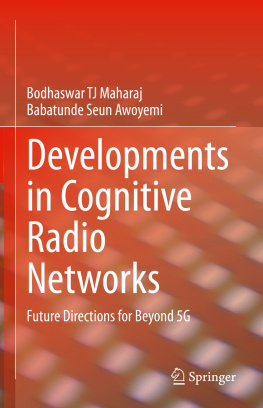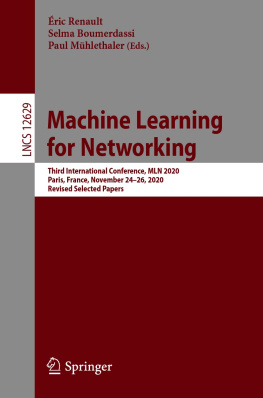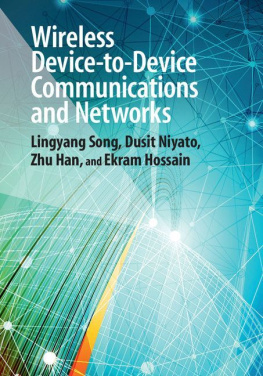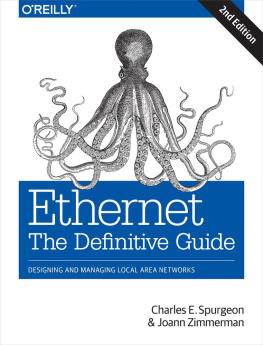Full-Duplex Communications and Networks
Learn about the key technologies and understand the state of the art in research for full-duplex communication networks and systems with this comprehensive and interdisciplinary guide. Incorporating physical, MAC, network, and application layer perspectives, it explains the fundamental theories on which full-duplex communications are built, and lays out the techniques needed for network design, analysis, and optimization. Techniques covered in detail include self-interference cancellation and signal processing algorithms, physical layer algorithms, transceiver design, resource allocation, networking and game theory for full-duplex systems. Potential applications and networking schemes are discussed, including full-duplex cognitive radio networks, cooperative networks, and heterogeneous networks.
The first book to focus exclusively on full-duplex communications, this is an indispensable reference for both researchers and practitioners designing the next generation of wireless networks.
Lingyang Song is Professor of Wireless Communications and Signal Processing in the School of Electrical Engineering and Computer Science at Peking University, China, and an IEEE Distinguished Lecturer. He is a coauthor of Wireless Device-to-Device Communications and Networks (Cambridge, 2015).
Risto Wichman is a Professor in the Department of Signal Processing and Acoustics at Aalto University, Finland. He was previously a Senior Research Engineer at the Nokia Research Center, Finland.
Yonghui Li is a Professor in the School of Electrical Engineering at the University of Sydney, Australia. He is a coauthor of Cooperative Communications: Hardware, Channel and PHY (Wiley 2010).
Zhu Han is a Professor in the Department of Electrical and Computer Engineering at the University of Houston, Texas. He has coauthored several books on wireless communications, including Game Theory in Wireless and Communication Networks (Cambridge, 2012) and Resource Allocation for Wireless Networks (Cambridge, 2008). He is a Fellow and a Distinguished Lecturer of the IEEE Communications Society.
Full-Duplex Communications and Networks
LINGYANG SONG
Peking University
RISTO WICHMAN
Aalto University, Finland
YONGHUI LI
University of Sydney
ZHU HAN
University of Houston

University Printing House, Cambridge CB2 8BS, United Kingdom
One Liberty Plaza, 20th Floor, New York, NY 10006, USA
477 Williamstown Road, Port Melbourne, VIC 3207, Australia
4843/24, 2nd Floor, Ansari Road, Daryaganj, Delhi 110002, India
79 Anson Road, #0604/06, Singapore 079906
Cambridge University Press is part of the University of Cambridge.
It furthers the Universitys mission by disseminating knowledge in the pursuit of education, learning and research at the highest international levels of excellence.
www.cambridge.org
Information on this title: www.cambridge.org/9781107157569
DOI: 10.1017/9781316662106
Cambridge University Press 2017
This publication is in copyright. Subject to statutory exception and to the provisions of relevant collective licensing agreements, no reproduction of any part may take place without the written permission of Cambridge University Press.
First published 2017
Printed in The United Kingdom by TJ International Ltd. Padstow Cornwall
A catalogue record for this publication is available from the British Library
Library of Congress Cataloging-in-Publication data
Names: Song, Lingyang, author.
Title: Full-duplex communications and networks / Lingyang Song, University of Peking, Risto Wichman, Aalto University, Finland, Yonghui Li, University of Sydney, Zhu Han, University of Houston.
Description: New York, NY, USA : Cambridge University Press, [2017] |
Includes bibliographical references and index.
Identifiers: LCCN 2017000005 | ISBN 9781107157569 (alk. paper)
Subjects: LCSH: Wireless communication systems.
Classification: LCC TK5103.2 .S665 2017 | DDC 384.5dc23
LC record available at https://lccn.loc.gov/2017000005
ISBN 978-1-107-15756-9 Hardback
Cambridge University Press has no responsibility for the persistence or accuracy of URLs for external or third-party internet websites referred to in this publication and does not guarantee that any content on such websites is, or will remain, accurate or appropriate.
To my wife, Tingting Li
Lingyang Song To
my family
Risto Wichman
To my three girls, Na Zou, Essie Li, and Eunice Li
Yonghui Li
To my family
Zhu Han
Contents
Preface
Overview
With more and more new multimedia-rich services being introduced and offered to a rapidly growing population of global subscribers, there is an ever-increasing demand for higher data rate wireless access, making more efficient use of this precious resource a crucial need. As a consequence, new wireless technologies such as Long Term Evolution (LTE) and LTE-Advanced have been introduced. These technologies are capable of providing high-speed, large-capacity, and guaranteed quality-of-service (QoS) mobile services. With the technological evolution of cellular networks, new techniques, such as small cells, have also been developed to further improve the network capacity by effectively reusing the limited radio spectrum. However, all existing wireless communication systems deploy half-duplex (HD) radios which transmit and receive the signals in two separate/orthogonal channels. They dissipate the precious resources by employing either time-division or frequency-division duplexing.
Full-duplex (FD) systems, where a node can send and receive signals at the same time and frequency resources, can offer the potential to double spectral efficiency; however, for many years it has been considered impractical. This is because the signal leakage from the local output to input, referred to as self-interference , may overwhelm the receiver, thus making it impossible to extract the desired signal. How to effectively eliminate self-interference has remained a long-standing challenge. Recently, there has been significant progress in self-interference cancellation in FD systems, which presents great potential for realizing FD communications for the next generation of cellular networks.
This book provides state-of-the-art research on FD communications and cellular networks covering the physical, MAC, network, and application layer perspectives. The book also includes fundamental theories based on which FD communications will be built. In addition to the self-interference cancellation signal processing algorithms, the book discusses physical layer algorithms, radio resource allocation and network protocols in the practical design and implementation of centralized and distributed FD wireless networks. Main applications such as FD cognitive radio networks, FD cooperative networks, and FD heterogeneous networks are explored.
The key features of this book are as follows:
- A unified view of FD communications and networking;
- A comprehensive review of the state-of-the-art research and key technologies of FD communications networks;
- Coverage of a wide range of techniques for design, analysis, optimization, and application of FD communications networks;

